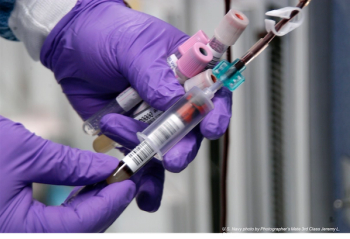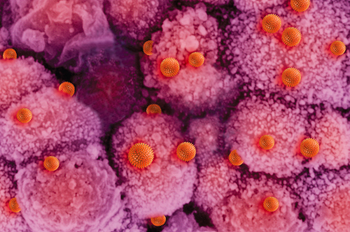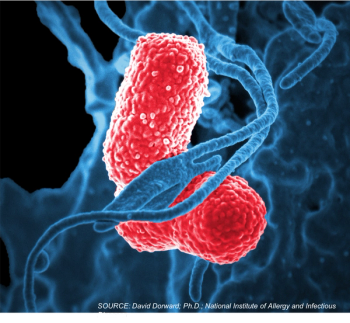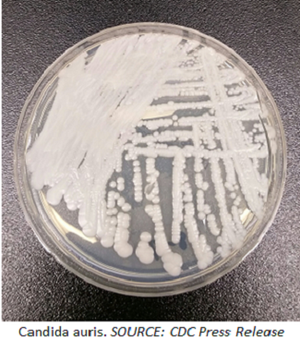
The Closing Plenary of IDWeek 2019 discussed the challenges of vaccination and the optimism that we may be on the path to eradicating some global infectious diseases.

The Closing Plenary of IDWeek 2019 discussed the challenges of vaccination and the optimism that we may be on the path to eradicating some global infectious diseases.

In the Opening Plenary of IDWeek 2019, 2 bright lights in infectious disease research spoke on the sea-change brought by genomics to biomedicine and the response to infectious disease outbreaks.

A symposium at ASM Microbe 2019 considered some specific examples of how bacteriophage shape the microbiome and also zoomed out for a higher-altitude view of the microbiome.

A look at the latest developments in drugs intended to quell gram-positive pathogens, including Clostridioides difficile and non-tuberculosis mycobacterial infections, as presented at ASM Microbe 2019.

The system allows for the rapid identification of bacteria directly from positive blood cultures, and can determine the antimicrobial susceptibility of the blood-borne pathogens.

Use of the FDA–cleared Accelerate Pheno blood culture detection system can shorten the time required to analyze patients’ blood samples leading to improved clinical outcomes, according to the results of a recent study.

Taking a closer look at the infectious disease risks posed by transplantation and what the future might have in store as the scope of transplantation expands.

The stage may finally be set for the phage therapy era for recalcitrant bacterial infections.

Results indicate patients who received single-dose oritavancin were significantly less likely to be hospitalized, compared to those who received multidose vancomycin.

Study results indicate that clinicians start prescribing new drugs off-label almost as soon as the drugs become available.

Delafloxacin was found to be relatively safe and well tolerated in patients with acute bacterial skin and skin structure infections with past or present cardiac or vascular difficulties.

Research presented at the 2018 ASM Microbe Meeting has reinforced the value of the just-approved next-generation aminoglycoside antibiotic, plazomicin, in treating multidrug-resistant Enterobacteriaceae.

IMI/REL was effective against isolates from the United States and Europe.

In the past 17 years, the number of hospitalizations due to cUTIs has risen by 50%.

Pooled analyses of 2 phase 3 trials have conclusively established the safety and effectiveness of iclaprim compared to vancomycin in the treatment of acute bacterial skin and skin structure infections (ABSSSI).

The President’s Forum at this year’s ASM Microbe meeting opened the eyes of many in the audience to the capacity of microorganisms to evolve.

The incidence of IE was lower in patients having a lower white blood cell count and lower numbers of platelets.

The pooled results have hammered home the promise of eravacycline for the treatment of patients with cIAIs who are colonized by drug-resistant bacteria.

Anne Schuchat, MD, provides some history and insights on CDC’s role in safeguarding public health when the microbial world collides with the human world.

An extremely virulent (hypermucoviscous) strain of Klebsiella pneumoniae that is resistant to carbapenem and colistin has been isolated for the first time from a patient in the United States.

A prospective examination of over 2600 patients has not revealed a difference in their outcome compared with patients who are non-neutropenic when it comes to bacteremia caused by Staphylococcus aureus.

The opening session of ASM Microbe 2018 cuts a broad swath through the science of microbiology.

These studies lay clear the clinical and economic toll of cytomegalovirus in the allo-HCT setting.

Intra-abdominal infections (IAIs) are defined as disease processes occurring in normally-sterile parts of the abdominal cavity, and are generally treated mechanically, such as by surgery.

Results from a randomized, double-blind, placebo-controlled trial show that letermovir protects from viral infection in CMV-seropositive individuals following allogeneic hematopoietic cell transplantation.

The ambitious goal of global elimination of the virus by 2030 will take buy-in from all major stakeholders, including the United States.

Presenters combed through the barrage of clinical trials to share those that could be practice-changing for clinicians.

Prolonged antibiotic use opens the door to the development of antibiotic resistance, superinfections, and the risk of Clostridium difficile infections.

The message for clinicians is to be vigilant. Look for candidemia and C. difficile infection occurring together.

Using combination antifungal therapy for invasive mold diseases is still a grey area that remains to be supported by robust data and relies heavily on clinician assessment.

Published: October 5th 2017 | Updated:

Published: October 5th 2017 | Updated:

Published: October 6th 2017 | Updated:

Published: October 6th 2017 | Updated:

Published: October 8th 2017 | Updated:

Published: October 9th 2017 | Updated: